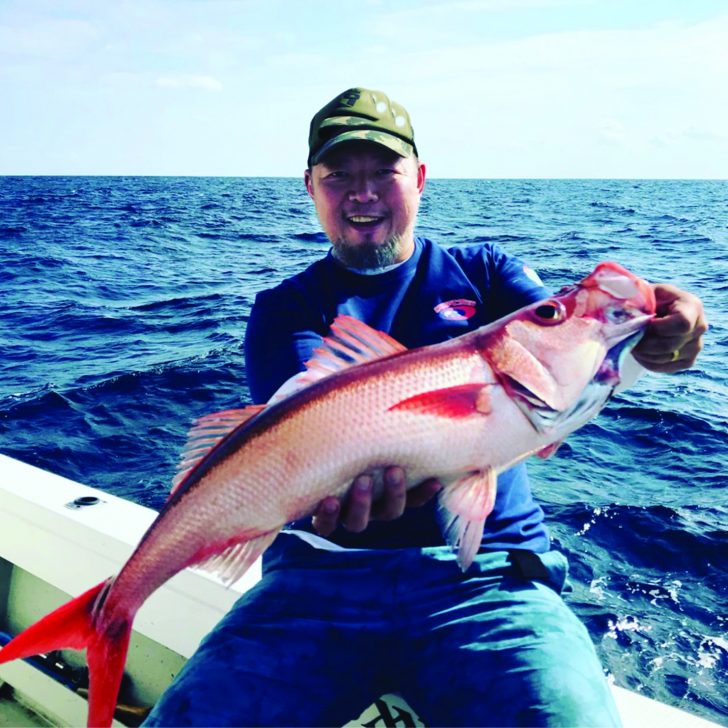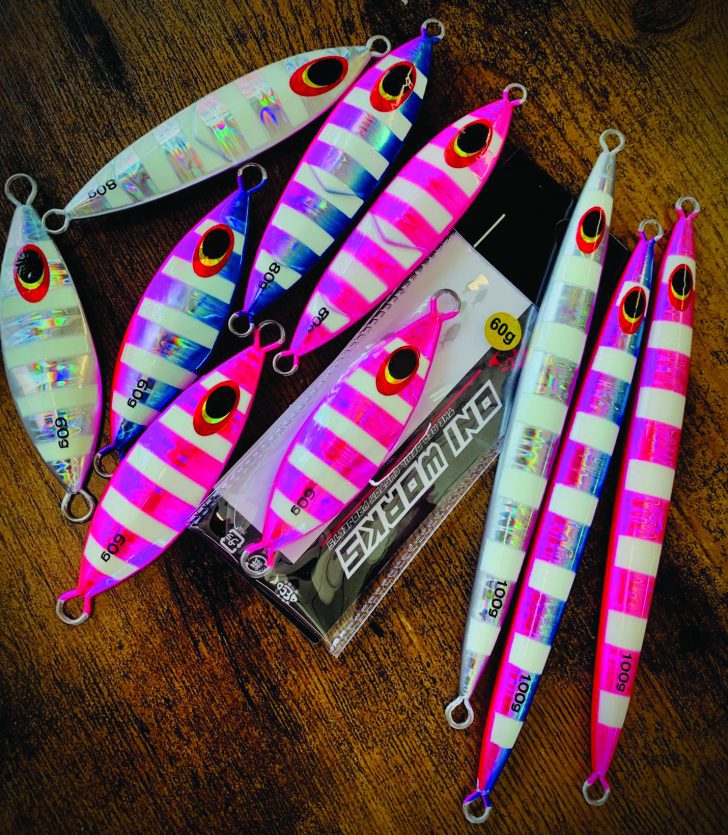By Diogo Yamada
Slow Pitch Jigging is a vertical fishing concept presented by sport fisherman and pro-staff of renowned Japanese brands Evergreen International and Decoy Hooks, Mr. Norihito Sato.

Speed Jigging continues to be very popular in Japan and around the World and is very efficient in certain situations and fish species, in addition to being more physical, sporty and with unbeatable strikes, while Slow Pitch Jigging is based on the principle of a more performance. Slow and smooth jig, coordinating with slow, synchronized recoils and creating a very seductive rhythm of its own.
Some reasons why Slow Pitch Jigging quickly became popular around the world:
– works for capturing a wide variety of species
– Provides good results even when fish are inactive (reaction)
– Can be practiced in different sea conditions
– Very efficient, with excellent productivity
The Slow Pitch Jigging Technique:
Slow Pitch Jigging simulates the swimming of the easiest and most irresistible prey to predators, such as injured fish, erratic swims and, most importantly, the horizontal fall or fluctuation.
Predators have an instinct to conserve energy, so performing slow jigging becomes much more attractive to these species.
Materials:
Reels: conventional ones with a good recoil ratio are the most recommended, between 75cm or faster.
Among the advantages of using conventional Reels we can mention:
– greater sensitivity, due to the rotation axis being perpendicular, making the line contact much more sensitive compared to a spinning reel (axis parallel to the line)
– less snags at the bottom
– “Controlled Fall”, where you can work the entire water column both in the descent and in the ascent, which is more complicated with the use of reels.

Note: for the choice of rod, the force ratio is inversely proportional to the sensitivity (Action Map).
PE lines: Polyethylene PE lines made slow pitch possible.
The drastic reduction in size and high tensile strength allowed the jigs to reach greater depth, being common deep-water fishing with lighter jigs and thus providing the emergence of more technical modalities such as slow pitch, super light jigging and now micro jigging where PE 0.6, 0.8 lines are used.
In the case of slow pitch jigging, the most used gauges are PE1.5, PE2 and PE3 according to the jig weight, depth and current conditions and target fish.
Shockleader: essential use in jigging fishing, considering that PE lines, despite being super resistant to traction, are extremely sensitive to abrasion.
The most suitable shockleaders are the Fluorocarbon leaders 30lbs, 40lbs and 50lbs, as they have very low visibility and low elasticity, providing the angler with greater control and sensitivity.
Connectors: The jig connection should be as clean and light as possible, following the order “solid ring/assist hook/split ring/jig”, or in the simplified version, “assist hook/split ring/jig”
The use of swivels is not recommended as they add extra weight and one end can unbalance the system and shorten the jig’s horizontal float time.
Jigs: There are three main types of jig used in Slow Pitch Jigging, such as Fall jig, Responsive Jig and Long Jig, and their subsequent variations.
Applied techniques:
– Slow pitch jerk
– Hi pitch jerk
– long fall
Fighting Techniques:
– Rod down, never pumping the rod
– Tai chi retrieve
– Straight pump technique
Boat positioning:
The vessel must always be positioned so that the fisherman has the line in the vertical position.
Some captains use parachute anchors and other forms of control and in Japan the use of rear sails or spankler are common to compensate for more efficient winds and drifts in the currents.

